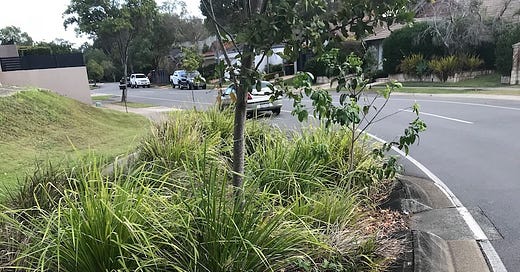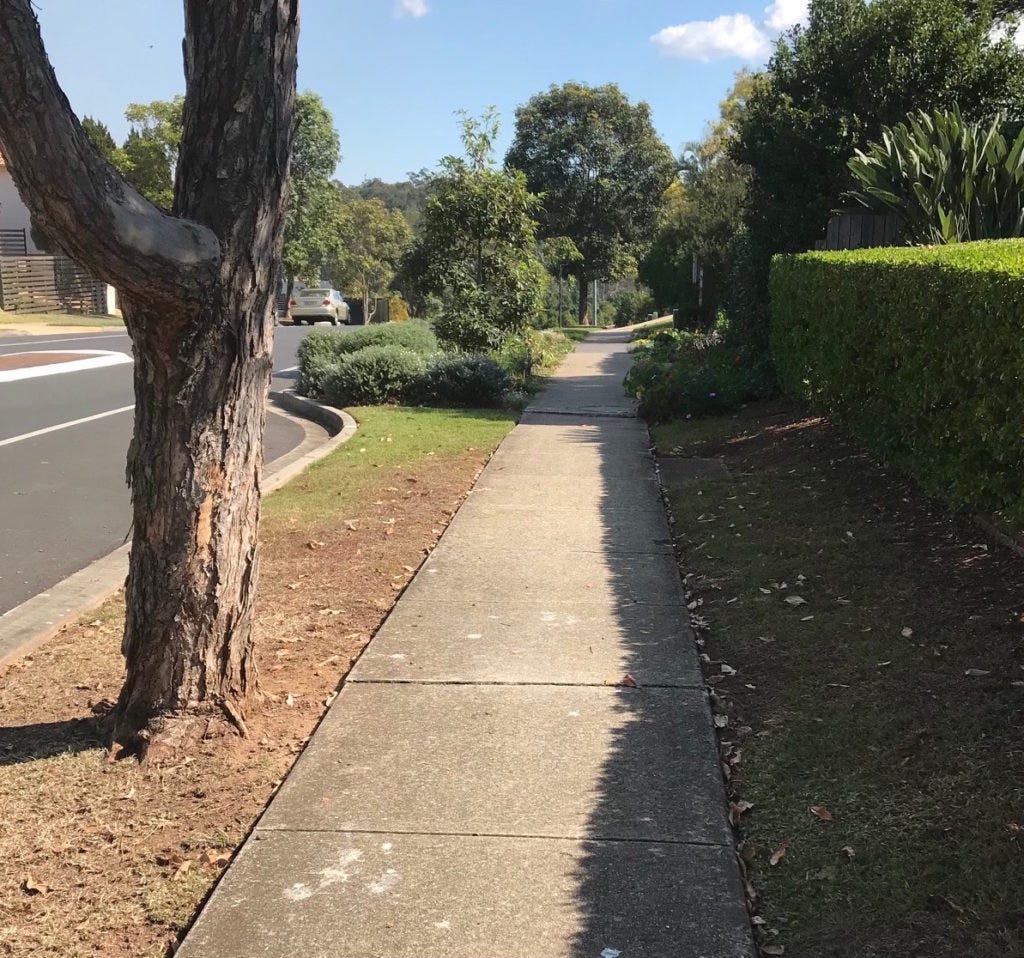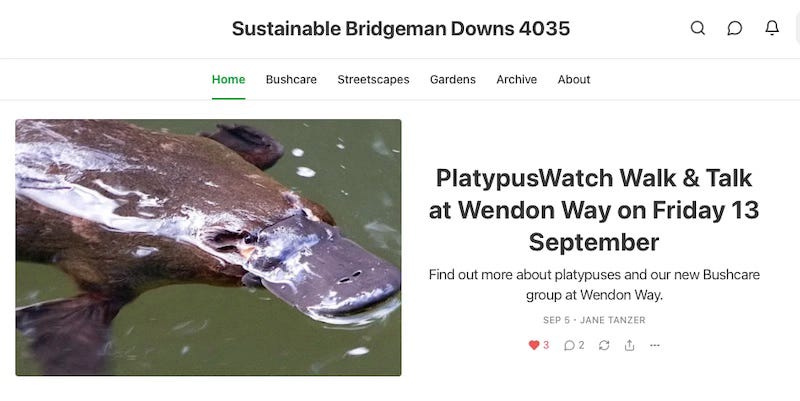Verge Gardens, Rain Gardens, and Bushcare. They're all connected.
Wherever you live, the stormwater from your garden ends up in the creeks and beyond.
Over the past few weeks, we’ve assembled a new bushcare group to help care for the area next to the creek in a local park. It’s an extra special spot because it is platypus habitat.
What’s bushcare got to do with verge gardens?
Verge gardens are the very public in-between, connecting space between private gardens and the largely hidden-from-view bushcare sites. It’s a place that people connect with each other and with nature.
Connecting Nature and Stormwater
Stormwater runs down the hill from my verge garden to a small tributary that flows into the platypuses’ creek. The health of the creek’s ecosystem and the platypus habitat is affected by rubbish and other contaminants washed into the drains and the increasing intensity of stormwater due to more hard surfaces from housing and roads.
So, the verge garden has two important jobs when it rains:
It avoids herbicides, pesticides, grass clippings, and seeds from weeds and exotic plants being washed down in the stormwater to the creek.
It slows down the stormwater and allows more rainwater to soak into the ground.
Wherever you live, the stormwater from your verge garden ends up in the creeks and beyond. That’s yet another reason that local native plants supporting the street trees is the best option for verge gardens.
Check out this fabulous raingarden the council installed at the bottom of the hill some years ago. It filters the water before it goes down the drain, under the road, to the creek.
We’re seeing more features like this, especially in new developments. They call it water sensitive urban design (WSUD). This is part of the stormwater system and the job of councils and professionals to install. It’s expensive, especially to retrofit in established suburbs.
Unlike the big rain gardens, verge gardens are doable right now, at scale. All it takes is for us to plant out our verges with native plants supporting the council street trees, in keeping with our local council policy.
Connecting People with Nature and Each Other
The thing about verge gardens is that they are public, but very close to home. Native verge gardens bring biodiverse habitat into the daily life of everyone who walks down the street. Nature is no longer something “over there” to be protected, it’s all around us.
Verges are also public space which means we bump into our neighbours and other passers-by and that helps build recognition and connections between people in a community.
When gardening in a public space, we make a transition from being a consumer of council services to a citizen collaborating with their council to contribute to the well-being of the community and our natural environment. We go from me, to we. For more on this, see the understanding the space articles.
By planting local native species, we introduce everyone walking by to our native plants - plants they’ll never see in the commercial nurseries. It provides an alternative to the monotonous suburban landscape of grass with the odd tree.
You could just stop there and be content with having converted your small patch of verge, and hope that others do the same. They rarely do. And you’d miss the opportunities to connect with others working to change our cities for the better.
For widespread change, we need to be intentional and strategic.
That means managing conversations around the activity of verge gardening, the why and what of our gardens, and nurturing collaborative relationships within the community and between residents and councils.
Internet technology (online publishing, email, social media, etc) plays a vital role. The Substack platform is designed for building networks - without the intrusion and advertising of old social media platforms.
The formation of this bushcare group was made much easier by our existing networks of people and their respective Substacks to hook into.
Bridging the Gap
Importantly, the vast gap between what we see in private manicured gardens and the natural biodiverse environment of bushland tended by councils and a few enthusiasts is bridged by our native verges and the conversations we have around them.
People who don’t have the time or inclination to join a bushcare group can still be part of greening our suburbs by transforming their own verge or being part of a group verge project. Should they become interested in bushcare later on, they’ll start with lots of knowledge gained on the verge.
For bushcare groups, the verges become a place to introduce native plants to the community and spread the message about how what we do in our streets and gardens affects nearby bushland and creek catchments.
Keeping the Cross-Links
The Substack we’ve created for our suburb combines bushcare, verge gardens (streetscapes), and private gardens. All three are complementary, so combining them in one publication reflects our local network, encourages cross-fertilisation, and reduces the overall effort required.
Check it out here or click on the image below.
Just imagine what our suburbs and cities would be like if more people took just one or two of those small local actions: their private garden for wildlife, their verges, their local patch of bushland. Everything connecting.
Find out more about running and promoting group projects and using Substack.







Just imagine what our suburbs and cities would be like if more people took just one or two of those small local actions
- That sentence is truly inspiring! I fully support the actions of new groups making a difference!!!
Many thanks to everyone involved in forming the new group. We can do so much more together than any one person, group, or organisation can do alone.